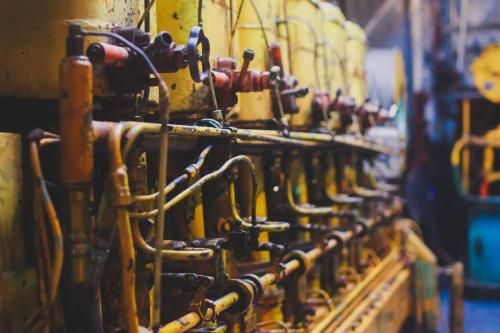Dr Rotimi Alabi sets out his ambition to reduce “lubrication-related machinery failure by 95%, downtime by 45%, machinery operating and maintenance cost by 30%,” while increasing machine availability by 25% using a new technique he developed to analyse machinery lubricating oil.
In an exclusive interview for The Naval Architect, he describes how his PhD studies in microfluidics at the University of Aberdeen in Scotland led him to develop what he calls a ‘lab-on-a-chip’ that can deliver rapid analysis of lubricating oil samples onboard a ship so that engineers can use its results to identify problems before they become serious.
To make his point, he cites a situation that arose during pilot tests with a customer that had suffered an engine breakdown in early 2021 because of an undetected fault which cost £250,000 to repair. But during trials in November and December, his device picked up tell-tale signs that the fault had returned, allowing it to be addressed, “and that saved the customer another £250,000 of repair costs”, he says.
Dr Alabi set up a company, RAB-Microfluidics, after his university research into applying the microfluidic process, a process widely used in life science applications to analyse fluids at the microscale, to heterogeneous mixtures such as crude oil. It was a topic that his supervisor – and now shareholder in RAB-Microfluidics – Dr Stephen Bowden had been exploring since 2006.
When Dr Alabi joined the project in 2011, he started by replicating Dr Bowden’s work to extract target compounds from crude oil and then sought to expand on this capability. This led Dr Alabi to develop a system that could make end-to-end chemical compositional analysis of crude oil on a 30cm by 30cm breadboard without needing the large and expensive instrumentation used in conventional laboratory analysis.
The process Dr Alabi had created was the first step in automating manual traditional wet chemistry protocols for separating pure compounds from heterogenous mixtures like crude oil. This essentially reduced the processing time of some of these traditional methods from days to minutes.
The system developed uses a glass microchip incorporated with optical sensors to separate and quantitatively analyse target compounds from mixtures. The glass microchip was created by using strong acid to wet etch an H-cell pattern on glass to create an H-cell patterned micro-channel where the separation occurs. This separation chamber allows for rapid fractionation of pure compounds from complex mixtures in minutes rather than days when compared to using manual traditional wet chemistry techniques. By incorporating sensors on this separation chamber, Dr Alabi’s PhD evolved away from simply separating out the compounds for offsite analysis to performing whole analysis onsite. Instead, “we do the analysis on the glass microchip itself”, he explains.
When he set up his company to exploit this process, his plan had been to automate wet chemistry protocols performed in laboratories. “But once we started looking deeper into industrial applications, we had a sense that there were more pressing far-reaching issues that the technology could help address,” he says.
What those were, however, was not immediately obvious. “We had a solution, we didn’t know what problem we were going to solve,” he recalls. “I stumbled on lubricating oil analysis and realised this was a significant industrial challenge that demanded ongoing monitoring.” It is also a topic that covers many sectors: any industry that uses rotating machinery, in fact. “It’s almost ubiquitous in the world we live in,” says Dr Alabi.
Investigating the chemistry of these oils further, he realised that “the microfluidic platform is robust enough to conduct lubricating oil analysis”, so his company has focused on that type of industrial problem.
He has patented the ‘lab-on-a-chip’ concept and has received over £1.1 million in development funding from various grant-awarding bodies, including £100,000 from the Net Zero Technology Centre and a £90,000 Enterprise Fellowship by the Royal Society of Edinburgh as well as several Innovate UK grant awards.
Most recently, the company received a £2.2 million equity injection in August from Par Equity, a Scottish early-stage investment firm that invests in innovative technology companies with high growth potential.
His technology portfolio currently consists of a portable oil condition monitoring device, initially dubbed a P-OCM, and a machine integrated system. He has now registered a new name for the unit, Oleum Oracle. It is being marketed now and some orders have been received, but its formal launch is expected towards the end of Q4 2022. An automated version that could be integrated onto operational machinery is also being developed and undergoing testing.
For the full article please see the October edition of The Naval Architect.




